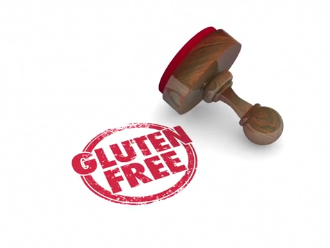Tiiips app: ingredients detective.
Free from Play Store!


Tiiips app: ingredients detective.
Free from Play Store!


| "Descrizione" by Al222 (18829 pt) | 2024-Jan-01 19:29 |
Mandatory therapy for coeliacs consists of the abolition of gluten from the diet.
Components that help celiacs are substances and foods that can be safely consumed by those with celiac disease. Here are some examples
The reports provided on Tiiips website are for informational purposes only and should not replace medical advice. Always consult a healthcare professional before making health-related decisions.
Components that can contribute to or exacerbate celiac disease include various factors that can trigger reactions in people with this condition. Here are some examples
Studies
Triggered by the ingestion of gluten in genetically predisposed individuals, celiac disease is the most common genetically based food intolerance in the world, with a prevalence among approximately 1% of the general population. This enteropathy may appear at any age and is characterized by a wide variety of clinical signs and symptoms that go well beyond the gastrointestinal tract. In young children, gastrointestinal presentations are common and include chronic diarrhea, failure to thrive, and abdominal distention; however, extraintestinal manifestations are becoming increasingly more common. They include numerous conditions such as dermatitis herpetiformis, anemia, dental enamel hypoplasia, recurrent oral aphthae, short stature, osteoporosis, arthritis, neurologic problems, unexplained elevation of transaminase levels, and female infertility. Therefore, diagnosing celiac disease requires a high degree of suspicion, followed by correct screening and a confirmatory test with an intestinal biopsy. After diagnosis, a strict gluten-free diet must be followed, which in most cases will bring a marked improvement of symptoms. However, there are important compliance and quality-of-life problems, especially in adolescents (1).

Recently, an interesting study focused on gliadine, a peptide responsible for celiac disease and other disorders found in wheat gluten, suggesting an alternative treatment to the abolition of gluten. In practice, an enzyme treatment on wheat gluten could prevent coeliacs from the gluten-free diet (2).
References_____________________________________________________________________
(1) Guandalini S, Assiri A. Celiac disease: a review. JAMA Pediatr. 2014 Mar;168(3):272-8. doi: 10.1001/jamapediatrics.2013.3858.
(2) Marino M, Casale R, Borghini R, Di Nardi S, Donato G, Angeloni A, Moscaritolo S, Grasso L, Mazzarella G, Di Tola M, Rossi M, Picarelli A. The effects of modified versus unmodified wheat gluten administration in patients with celiac disease. Int Immunopharmacol. 2017 Jun;47:1-8. doi: 10.1016/j.intimp.2017.03.012.
| Evaluate |